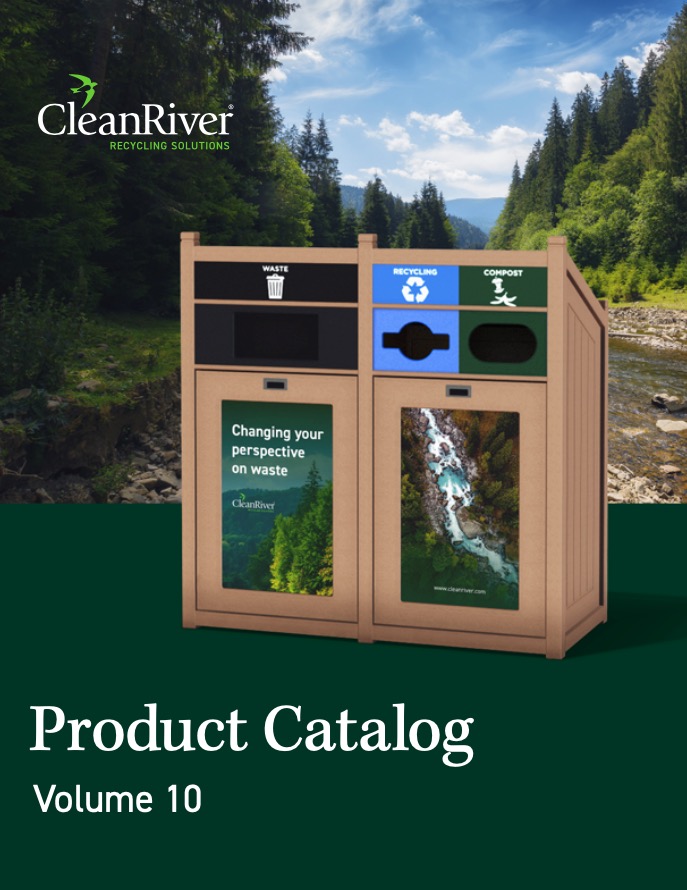Share
Summer has finally arrived, and event season is officially upon us. Whether you’re planning a community street fair, a music festival, a bar mitzvah, or even a wedding there are simple steps you can take to drastically reduce the negative impact your party has on the environment. With sustainability and social responsibility top of mind these days there is tremendous opportunity to make any high-profile event a platform for increasing public awareness about eco-friendly alternatives available and the importance of recycling.
1. Make Sustainability A Priority In The Planning Stages

If you’re responsible for planning or hosting an event, you have the most power to make sustainability a priority in the pre-planning stages. By attempting to tackle your eco-friendly ideas last minute you could miss many opportunities that could result in bad PR or unnecessary problems. If you’re proactive in the early stages of planning, you have a better chance of getting potential partners on board with your sustainability goals. From choosing a more eco-friendly and accessible location to checking with your region’s waste and recycling mandates, factoring the environmental effects into every step of the planning process will ultimately reduce your party footprint.
2. Work With Event Partners To Engage Them In Your Eco-Friendly Efforts
No matter the size or type of event, be sure to work with vendors, caterers, and concessionaires to engage them in your eco-friendly efforts. They can adopt proactive practices and reduce or avoid waste before it is generated or even brought into your event space.
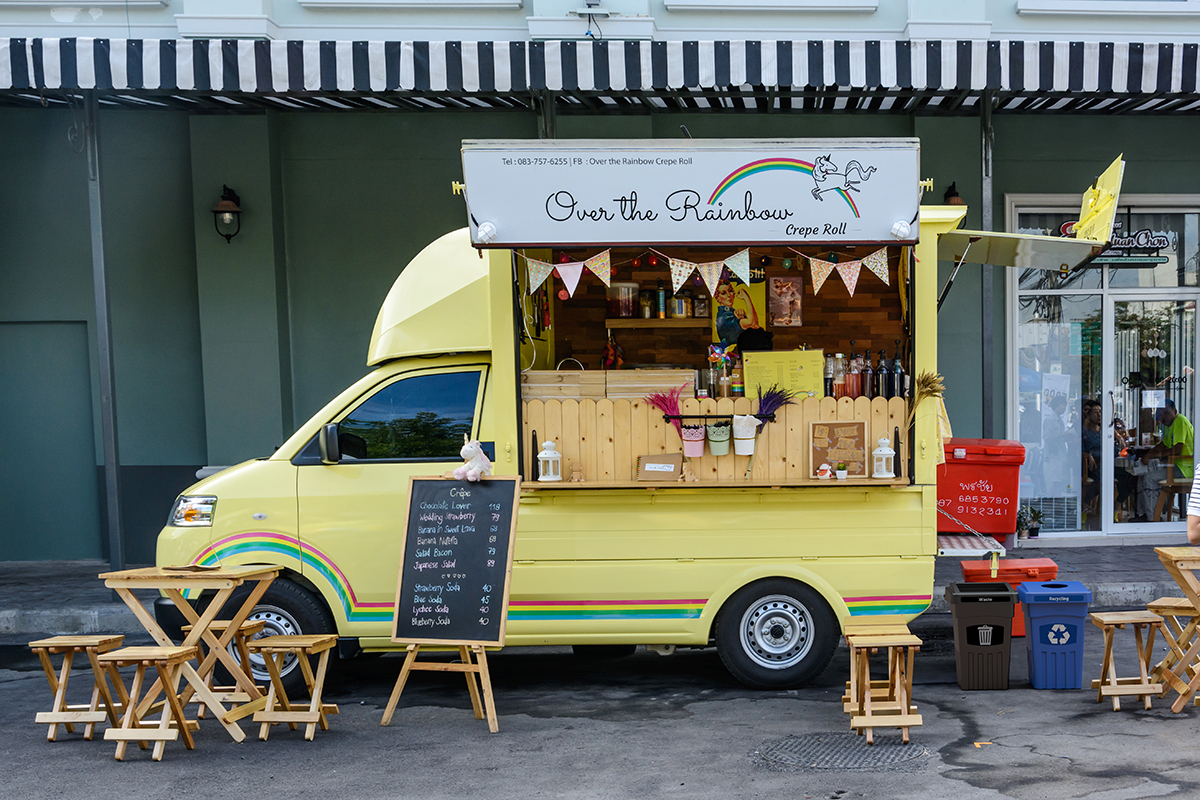
If you’re planning a community or public event, it’s also a great idea to form partnerships with waste haulers, local government, and non-profit organizations. Keep America Beautiful or Recycle Everywhere are just a couple examples of the many organizations out there that focus on consulting with businesses and event spaces about their recycling programs and offer free funding for recycling bins.
3. Collect Multiple Streams At One Station

Even if you are just collecting recycling and landfill, it is important that these streams are connected AT ALL TIMES! Studies have shown that stream contamination is reduced when one station is used to collect multiple streams rather than having individual bins. Single bins can become separated or moved due to the pressure of large crowds or during cleaning of the facility. When streams are separated, guests will use the most convenient bin rather than the correct one to toss their waste into. So, till death do us part baby, and keep those streams married, because the wrong waste in the wrong bin will significantly impact stream contamination and your overall waste diversion goals.
4. Include Organics

Any good event better have good food, which also means there is going to be food waste. Incorporating organic waste collection into your event planning is a good idea if you are looking to minimize how much of your party waste is sent to landfill. Organic waste is a valuable resource that can be composted to produce soil fertilizers to enhance soil quality and reduce soil erosion. By choosing to separate organics for composting, you can lower your waste hauler fees, and make a positive impact on the environment.
For more information about how to properly collect organics at your upcoming event, check out our blog Operation Organics.
5. Think About Where You Will Place Your Recycling Bins
Forget the seating chart! When it comes to eco-friendly event planning it’s all about bin placement. Optimal bin placement throughout your event will significantly affect whether guests and staff use the bins effectively. Determine the traffic flow of your event space and how people will move throughout the different areas. Different types of events will require different bins.
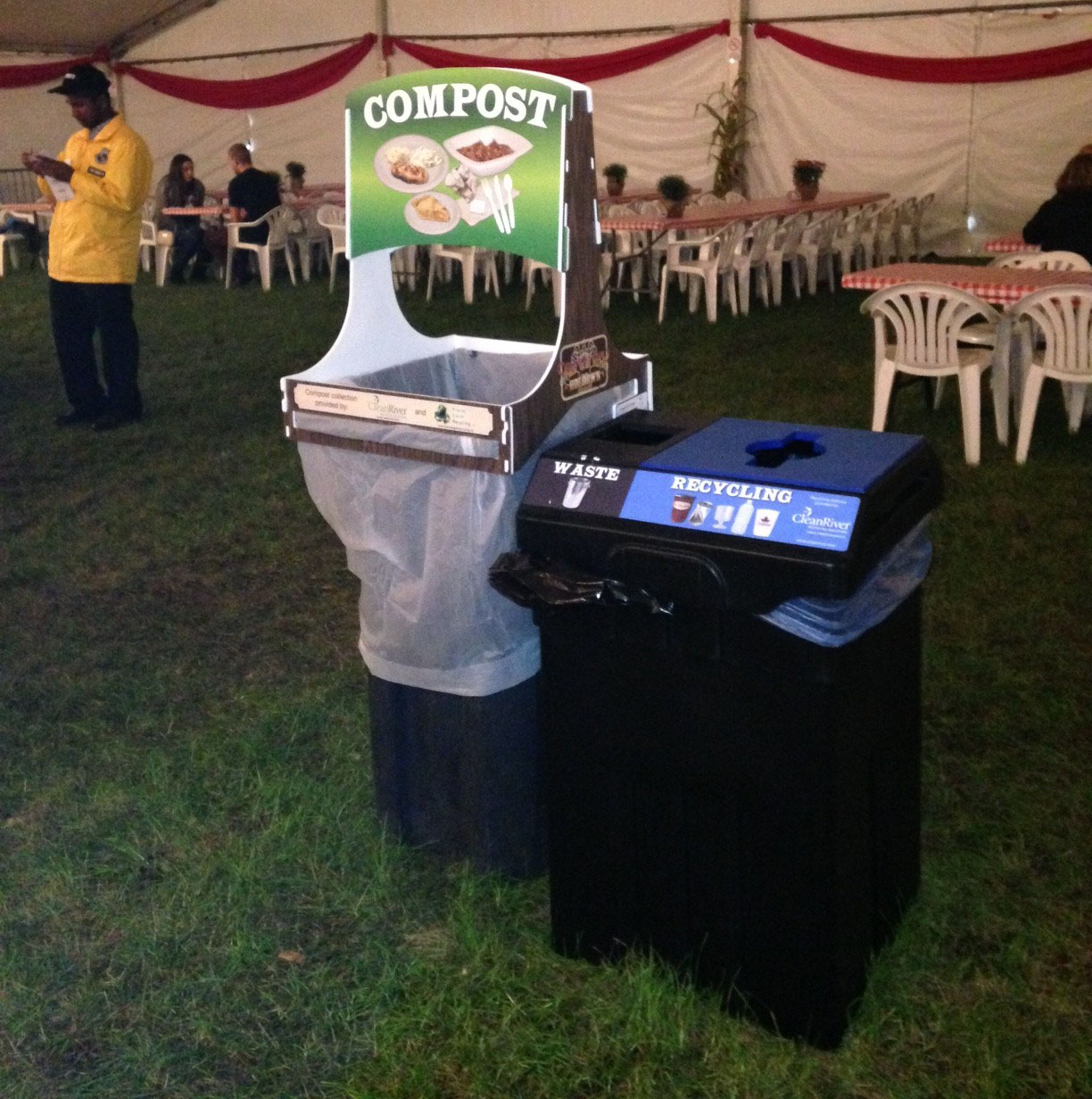
An outdoor music or food festival will need bins that can be placed out in the open and can be accessible from both sides. Whereas an event center will need bins by entrances, in hallways, and against the walls. Different areas may also require different recycling bin designs. For example, your bin and stream needs in the washrooms will differ from what you need back of house or in a kitchen or bar space. It’s important to note that both areas must be supporting each other by collecting the same streams.
6. Make Sure You Have Clear Graphics On Your Recycling Bins
People have 2-3 seconds to make the right choice as they approach a recycling bin. Graphics that stand out and clearly communicate what needs to go into that bin are critical for success. Less is definitely more though when it comes to the number of images. Too many can become confusing and so people give up and toss their waste into the nearest bin.
It’s best practice to use images of the vendor products during your event, this helps guests make the right choice. The use of graphics instead of text only assists with any language barriers, and helps people make a quick decision when their attention may be on the excitement of the party, chatting with their friends, or if they are under the influence of alcohol.
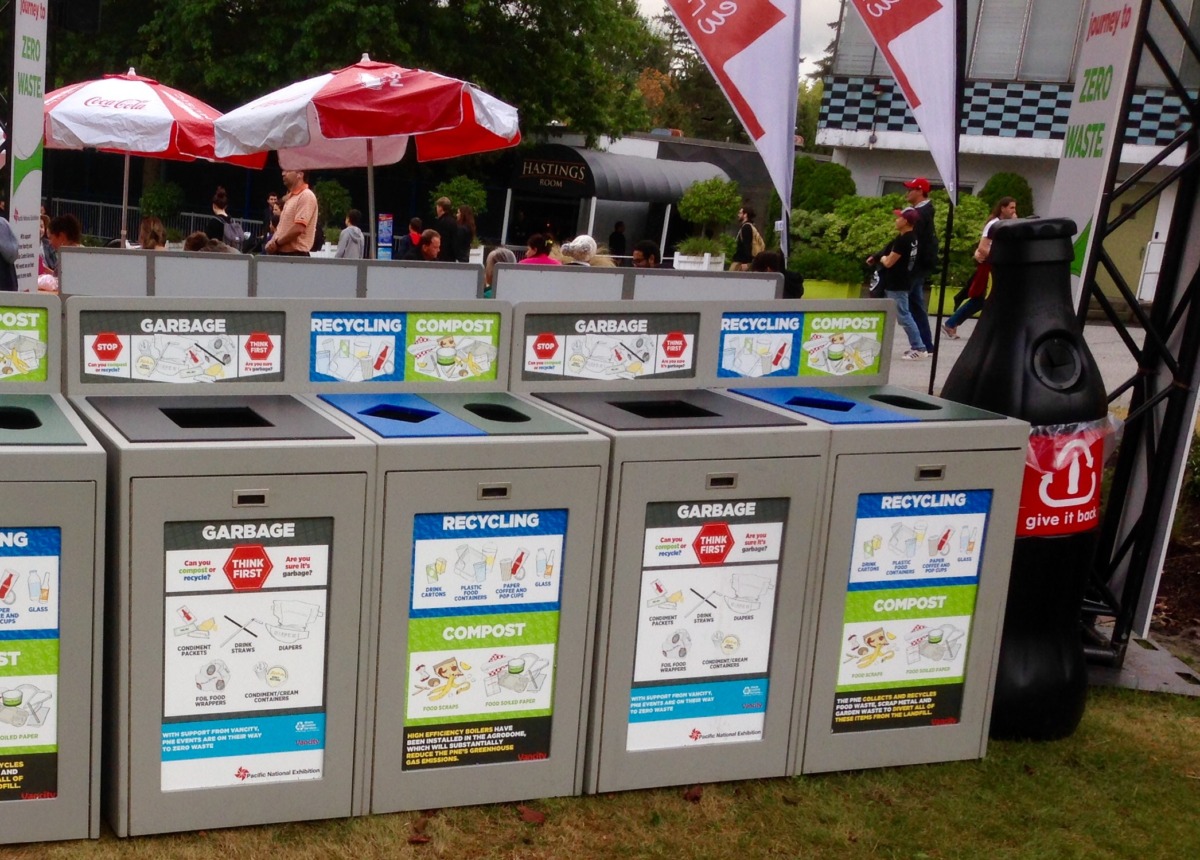
CleanRiver Transition® TIM bins with waste journey graphics at outdoor event
7. Get Volunteer Buy-In
When it comes to public and non-profit events it is essential to get the volunteer’s buy-in for supporting and carrying out your recycling plan. At the annual Magna Hoedown, volunteers were stationed next to the recycling and waste stations ready to direct guests on how and where to properly sort their waste. They were also helpful in collecting and sorting any discarded waste throughout the space and responsible for post-event cleanup. With the commitment of their volunteers, the 2017 Magna Hoedown significantly increased their waste diversion and are planning on implementing a similar set up in 2018.
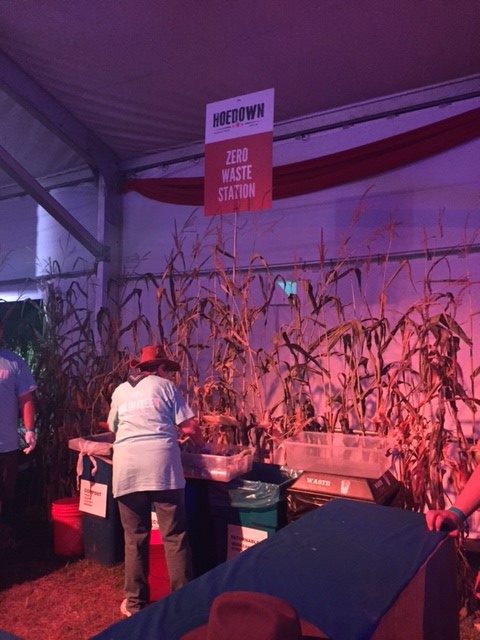
Volunteer sorting waste at recycling station at Magna Annual Hoedown
8. Let Everyone Know About Your Sustainability Goals
During the planning and lead up to the big day, tell everyone about your sustainability goals, where the bins will be located, and what items are recyclable and compostable. Including this information online, in event programs, invites, promotional posters, on social media, etc. are just some of the many ways you can generate buzz about your eco-friendly initiatives and encourage people to participate on the day.
CleanRiver’s Quick Tips To Support Your Eco-Friendly Event Goals:
- Whether you’re sending invites to a wedding or notifying the community of a street fair, go paperless. Create your own website for the event to include information about the schedule of events, directions and any instructions. Not only will you save time and money, but guests can RSVP instantly which provides an accurate guest count which is much quicker than mail.
- Choose a location that’s accessible by foot or public transportation.
- Work with local caterers to create a farm-to-table menu. Local and seasonal food is eco-friendly and always fresh and delicious.

- From full wedding attire to décor and favors source recycled party items for purchase online. Check out these great websites to buy and sell used wedding and party items:
- Serve jugs of water instead of bottled water.
- Purchase food in bulk to reduce packaging and costs.
- STOP SUCKING! Work with vendors and caterers to ditch plastic straws for drinks and bar service.
- Go Floral Foam Free – Floral foam is a petro-chemical product that doesn’t break down in landfill, plus it is made up of harmful chemicals some of which are carcinogenic which can cause cancer after prolonged exposure. #Flowerfoamfree is a new movement that many florists are adopting into their practice and making a conscious business decision for the environment and their customer’s health.

- Instead of Black Tie, request that guests re-wear an outfit or make the dress code “vintage”.
- Green gifting – choose guest gifts or party favours that are useful, reusable, ethically produced and have minimal packaging. Just check out Pinterest for thousands of clever, simple and eco-friendly ideas.
For more information on making your upcoming event more eco-friendly, check out our blog How To Avoid Buying The Wrong Kind Of Compostable Material For Your Eco-Friendly Event.
CleanRiver Recycling provides a variety of innovative, flexible and customizable recycling solutions. To determine the right solution to meet your needs, use the CleanRiver product selector.
If you have additional questions that weren’t answered in this blog post please call us at 1-888-646-4246 or email solutions@cleanriver.com.


